Introduction to C6 Lap Steel Tuning
As I sat with my lap steel guitar for the first time, a single tuning transformed my understanding of music’s endless possibilities. C6 lap steel tuning, with its intriguing potential, quickly became my guiding light. You might wonder how a simple tuning could revolutionize a playing style. With patience and practice, I discovered that mastering C6 tuning opened an array of techniques and styles that I had never imagined possible.
This guide aims to illuminate that journey for you, too. Whether you’re a complete novice eyeing your first strings or a seasoned guitarist eager to explore new horizons, understanding the fundamentals of C6 tuning can be your gateway to creative expression on the lap steel. Together, we’ll delve into the hows and whys, from setting up your instrument to unlocking advanced techniques. Welcome to your comprehensive beginner lap steel guide where each string tells a new story.
What is C6 Tuning?
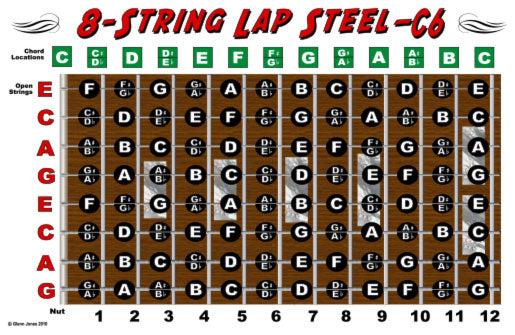
Having delved into the world of guitar tunings extensively, I can confidently say that C6 tuning offers a unique richness worth exploring. Did you know that C6 tuning resembles the harmony of a major triad? This captivating quality provides a melodious and full-bodied sound that has made it a favorite among lap steel enthusiasts. Through my research in lutherie, I’ve come to appreciate how this tuning grants players the ability to delve into complex chord structures with remarkable ease.
But let’s break down what C6 tuning truly consists of. The C6 tuning, as the name suggests, is rooted in the C6 chord—a quintessential composition in music theory. It’s comprised of the notes C, E, G, A, C, and E. These intervals create a harmonious framework that proudly displays C6 tuning advantages, offering both flexibility and simplicity. As one navigates the C6 scale, there’s an opportunity to play both melodic lines and rich chords without overly complicated finger placements.
In my experience, what makes C6 particularly appealing is its capacity to bridge traditional sounds with modern influences, making it an incredibly versatile tuning. Whether you are seeking to emulate the soulful sounds of the past or craft something uniquely yours, the C6 tuning serves as an invaluable tool in a musician’s repertoire.
Why Choose C6 Tuning for Your Lap Steel?
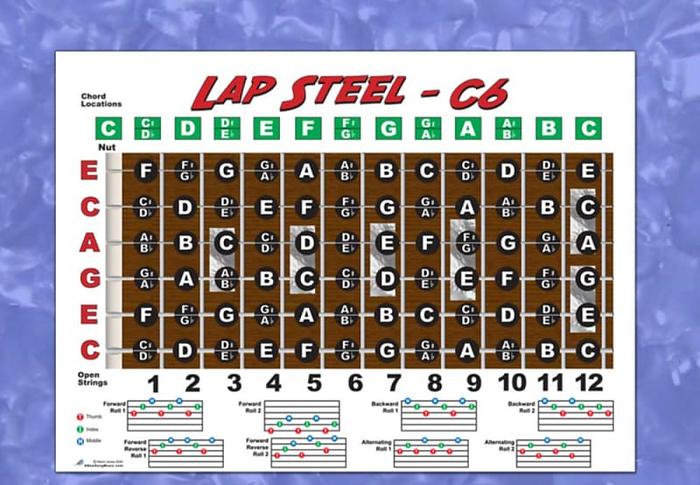
As I delve deeper into the realm of lap steel guitars, the question naturally emerges: What makes C6 tuning a preferred choice among professional lap steel guitarists?? From my experience, the answer lies in the way this tuning invites a transformative exploration of sound and technique. Embraced by seasoned players for its versatility, C6 tuning offers a rich tonal palette that is not only captivating but also surprisingly intuitive to navigate.
Drawing from the insights of luminaries like R.M. Mottola, I’ve found that C6 tuning enhances the playability of the lap steel, allowing for a smoother transition across musical genres. The tuning’s arrangement facilitates the execution of intricate lap steel guitar techniques, empowering me to express a wide range of musical ideas with clarity and depth. This broadened sonic capability doesn’t just add variety to my performances; it fosters a genuine creative freedom that’s hard to achieve with other tunings.
Ultimately, mastering C6 tuning is not just about acquiring a new skill—it’s about unlocking an expansive musical dialogue that resonates profoundly with audiences. As we continue our journey through C6 tuning, the benefits it offers will become a vital companion to your musical expression. In the forthcoming sections, we’ll explore who stands to gain the most from embracing this innovative tuning method.
Who Can Benefit from Learning C6 Tuning?
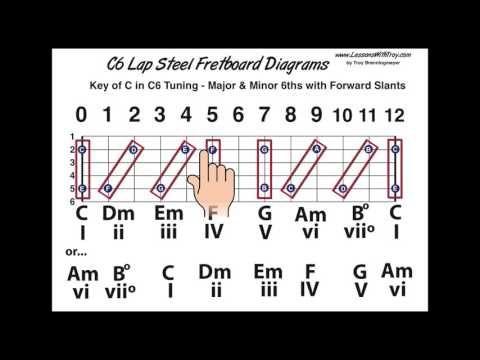
Could mastering C6 tuning be the key to unlocking your musical potential? As both a luthier and musician, I’ve discovered that the world of C6 tuning is not just a niche for steel guitar aficionados, but an open invitation for anyone eager to deepen their musical understanding. Through lap steel guitar lessons, I’ve witnessed beginners and seasoned players alike experience the lightbulb moments when C6 tuning sheds new light on music theory.
R.M. Mottola’s insights ring true: beyond merely a tuning mode, C6 tuning acts as an eloquent gateway to understanding chord progressions and improvisational possibilities. It challenges players to think differently about chord voicings and instrument mechanics, fostering a new appreciation for the marriage of technique and creativity.
So whether you’re just starting out or have years of experience, delving into C6 tuning might just be the transformative experience your musical journey needs. Embrace it, and it could very well broaden the horizons of your musicianship, unveiling layers of potential you never knew existed.
How to Tune a Lap Steel Guitar to C6
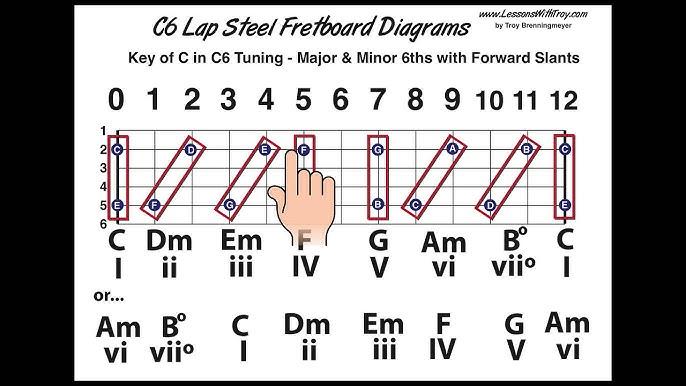
With years of experience immersing myself in the nuances of lap steel guitars, I’ve come to appreciate the meticulous art of tuning them to perfection. There’s something uniquely satisfying in achieving that resonant C6 tuning, which opens up a world of musical possibilities. What are the essential steps to achieving perfect C6 tuning on your lap steel guitar? This question often signals the start of a rewarding journey where precision meets creativity.
To begin with, you’ll need a reliable tuner and a lap steel tuning chart to guide you. These charts are invaluable, offering detailed notes for each string, transforming confusion into clarity. For a standard six-string setup, aim for the notes C, E, G, A, C, and E from bottom to top. Here’s where my personal touch comes in—I recommend tuning from the lowest string upward, ensuring each note is stable before proceeding. This methodical approach minimizes string tension issues.
Precision is paramount in lap steel tuning. Each string needs careful attention, frequently revisiting them to confirm they hold the desired pitch. Trust me, your diligence rewards you with a harmonious chord. Over time, as you attune your ear, the lap steel will become an extension of your musical self, its distinct C6 sound empowering your expression. With patience and practice, you’ll develop an intuitive knack, leading you ever closer to mastering this essential tuning.
Where to Find Resources for C6 Lap Steel Tuning

Did you know that the right resources can significantly accelerate your learning curve in lap steel guitar? This insight has been pivotal in my own journey through mastering C6 lap steel tuning. Navigating the vast sea of information can indeed be daunting, but knowing where to look can make all the difference. From my experience, the combination of online and printed materials not only broadens one’s understanding of the C6 tuning guide but also enriches the practice itself.
Online platforms such as forums, video tutorials, and dedicated websites offer a community-driven approach, allowing you to connect with fellow enthusiasts and experts. Meanwhile, printed resources, including specialty books and lap steel guitar exercises, can provide structured learning paths and curated content that reinforce your grasp of the rich intricacies of C6 concepts. Seeking out these materials and weaving them into your practice routine ensures a well-rounded and deeply rewarding musical experience, one that R.M. Mottola and many seasoned musicians have found invaluable in their own quests to perfect their art.
What Techniques to Use While Playing in C6?
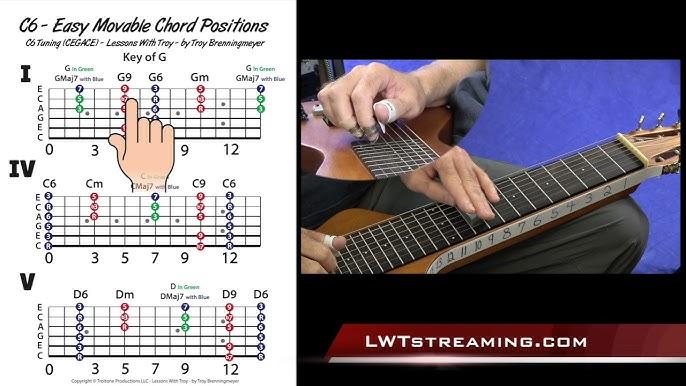
When diving into the world of C6 lap steel tuning, the variety of techniques at your disposal can shape your playing into something truly captivating. Drawing from my lutherie research, I’m convinced that developing a versatile skill set is key. How can specific techniques enhance your C6 lap steel playing experience? The answer lies in their ability to unlock new dimensions of expression and versatility.
The foundation of C6 tuning patterns is understanding its unique scale layout. This tuning opens up movable chord positions that can transform how you perceive harmony on the lap steel. I vividly recall the first time I applied slant bar techniques in these positions, adding a sophisticated flair to my music that captivated audiences. It was a revelation that shifted my creative process profoundly.
Beyond chord positions, mastering techniques like palm blocking is crucial. It affords the precision needed to articulate notes cleanly, maintaining the instrument’s melodic integrity. The interplay between muted and open notes can dramatically alter the emotional tone of a piece, offering nuanced dynamics. Additionally, exploring harmonic chimes and volume swells offers further color, seamlessly weaving emotion into melodies.
Each of these techniques, while demanding practice and patience, enriches your musical journey, enabling you to convey complex emotions and ideas on your lap steel. Embrace them, and your C6 lap steel playing will not only evolve but resonate in ways you might never have imagined.
FAQs
What is C6 Lap Steel Tuning?
Why is C6 Tuning preferred for lap steel guitars?
How do I tune my lap steel guitar to C6 tuning?
What are some common chords in C6 Lap Steel Tuning?
Can I play blues in C6 Lap Steel Tuning?
Conclusion
What is the most important takeaway for anyone looking to master C6 lap steel tuning? Through this comprehensive journey, I’ve discovered that a solid grasp of C6 tuning not only empowers players but also fosters confidence and creativity in musical expression. As emphasized in this beginner lap steel guide, understanding the unique voice of C6 tuning unlocks a world of melodic opportunities and emotional depth. Whether you’re starting out or honing your skills, remember that persistence and exploration are key. Ultimately, mastering C6 lap steel tuning is about embracing the harmony between technical precision and artistic flair.

R.M. Mottola, an engineer-turned-luthier, revolutionizes stringed instrument design with his deep focus on acoustics and ergonomics since 1994. As editor of the Savart Journal and a key contributor to American Lutherie, Mottola merges science with artistry in lutherie. He enriches the field with his extensive knowledge, shared through his Liutaio Mottola website, making him a beacon in the world of modern instrument craftsmanship.

Very good write-up. I’m just starting out and got so much from this piece. Thank you.
Gary